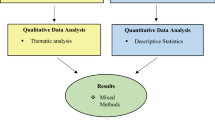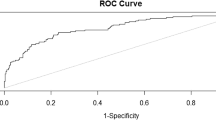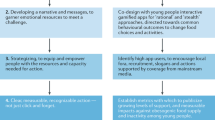Abstract
OBJECTIVE: To investigate lay perceptions of the causes and prevention of obesity among primary school children.
DESIGN: A cross-sectional survey of randomly selected sample of adults in a shopping centre.
SUBJECTS: 315 adults in Melbourne, Australia.
MEASUREMENTS: Subjects completed a self-completion questionnaire, in which they rated the importance of 25 possible causes of obesity and the importance of 13 preventive measures on four-point scales: not important; quite important; very important; extremely important. Demographic information about the respondents' age, sex, marital status, education level and parental status was also collected.
RESULTS: The most important reported causes of childhood obesity were related to overconsumption of unhealthy food, parental responsibility, modern technology and the mass media. The most popular prevention activities were associated with specific actions aimed at children. Principal components analysis of the causes data revealed eight factors, provisionally named: parental responsibility, modern technology and media, overconsumption of unhealthy food, children's lack of knowledge and motivation, physical activity environment, lack of healthy food, lack of physical activity and genes. Two prevention factors were also derived, named government action and children's health promotion. Parents saw modern technology and media, and government activities as more important causes, and government policy as a more important means of prevention than nonparents and men. Women's responses tended to be similar to those of parents. There were few educational differences, although nontertiary educated respondents reported that modern technology and media were more important causes of obesity than did the tertiary educated.
CONCLUSION: The findings suggest that the public appears to hold quite sophisticated views of the causes and prevention of children's obesity. They suggest that a number of prevention strategies would be widely supported by the public, especially by parents.
This is a preview of subscription content, access via your institution
Access options
Subscribe to this journal
Receive 12 print issues and online access
$259.00 per year
only $21.58 per issue
Buy this article
- Purchase on Springer Link
- Instant access to full article PDF
Prices may be subject to local taxes which are calculated during checkout
Similar content being viewed by others
References
World Health Organisation. Obesity, preventing and managing the global epidemic, Report of the WHO consultation on obesity WHO: Geneva; 2000.
Magarey MA, Daniels LA, Boulton TJC . Prevalence of overweight and obesity in Australian children and adolescents: reassessment of 1985 and 1995 data against new standard international definitions. Med J Aust 2001; 174: 561–564.
US Department of Health and Human Services. The Surgeon General's call to action to prevent and decrease overweight and obesity.US Department of Health and Human Services: Rockville, MD; 2001.
National Audit Office. Tackling obesity in England. Stationery Office: London; 2001.
Fagot-Campagna A . Emergence of type 2 diabetes mellitus in children: epidemiological evidence. J Pediatr Endocrinol Metab 2000; 13 (Suppl): 1395–1402.
Crawford D . Population strategies to prevent obesity. BMJ 2002; 325: 728–729.
Crawford D, Ball K . Behavioural determinants of the obesity epidemic Asia-Pacific. J Clin Nutr 2002; 11 (Suppl): S718–S721.
Kumanyika S, Jeffery RW, Morabia A, Rittenbaugh C, Antipastis V . Obesity prevention: the case for action. Int J Obes Relat Metab Disord 2002; 26: 425–426.
Booth SL, Mayer J, Sallis JF, Ritenbaugh C, Hill JO et al. Environmental and societal factors affect food choice and physical activity: rationale, influences and leverage points. Nutr Rev 2001; 59: S21–S39.
French SA, Story M, Jeffery RW . Environmental influences on eating and physical activity. Ann Rev Public Health 2001; 22: 309–335.
Robinson TN, Liernan M, Matheson DM, Haydel KF . Is parental control over children's eating associated with childhood obesity. Results from a population-based sample of third graders. Obes Res 2001; 9: 306–312.
Myers S, Vardas Z . Parental perceptions of the preschool obese child. Pediatr Nurs 2000; 26: 23–31.
Young-Hyman D, Herman LJ, Dawnavan LS, Schlundt DG . Care-giver perception of children's obesity-related health risk: a study of African American families. Obes Res 2000; 8: 241–248.
Hare SW, Price JH, Flynn MG, King KA . Attitudes and perceptions of fitness professionals regarding obesity. Commun Health 2000; 25: 5–21.
Australian Bureau of Statistics. 1996 Census of population and housing. Socio-economic indexes for areas. Commonwealth of Australia, Canberra, 1998.
Hill JO, Peters JC . Environmental contributors to the obesity epidemic. Science 1998; 280: 1371–1374.
Catford J . Promoting healthy weight—the new environmental frontier. Health Prom Int 2003; 18: 1–2.
Schmitz MKH, Jeffery RW . Public health interventions for the prevention and treatment of obesity. Med Clin North Am 2000; 84: 491–512.
Maynard EJ, Coonan WE, Worsley A, Dwyer T, Baghurst PA . The development of the Lifestyle Education Program in Australia invited chapter for Reduction of Cardiovascular Risk factors in childhood. In: Hetzel BS, Berenson GS (eds) Elsevier: Amsterdam; 1987 pp 123–150.
Dwyer T, Coonan WE, Worsley A, Leitch DR . An assessment of the effects of two physical activity programs on coronary heart disease risk factors in primary school children. Commun Health Stud 1979; 3: 196–202.
Acknowledgements
David Crawford was supported by an Australian National Health and Medical Research Council/National Heart Foundation Career Development Award. We thank Ms D O'Hara Manager of The Glen Shopping Mall for permission to interview shoppers, and Dr Anna Timperio for statistical advice.
Author information
Authors and Affiliations
Corresponding author
Rights and permissions
About this article
Cite this article
Hardus, P., van Vuuren, C., Crawford, D. et al. Public perceptions of the causes and prevention of obesity among primary school children. Int J Obes 27, 1465–1471 (2003). https://doi.org/10.1038/sj.ijo.0802463
Received:
Revised:
Accepted:
Published:
Issue Date:
DOI: https://doi.org/10.1038/sj.ijo.0802463
Keywords
This article is cited by
-
Public support for government regulatory interventions for overweight and obesity in Australia
BMC Public Health (2018)
-
Adenosine and adenosine-5′-monophosphate ingestion ameliorates abnormal glucose metabolism in mice fed a high-fat diet
BMC Complementary and Alternative Medicine (2018)
-
Responsibility as an Obstacle to Good Policy: The Case of Lifestyle Related Disease
Journal of Bioethical Inquiry (2018)
-
Parental and Child Factors Associated with Under-Estimation of Children with Excess Weight in Spain
Maternal and Child Health Journal (2017)
-
Hungry for an intervention? Adolescents’ ratings of acceptability of eating-related intervention strategies
BMC Public Health (2015)



